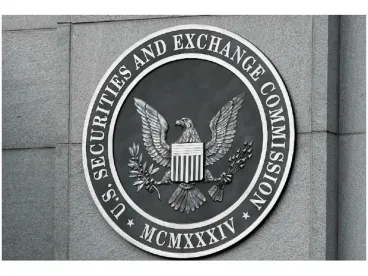Samuel L. Jackson’s character Jules Winnfield in the Quentin Tarantino classic, Pulp Fiction, famously described himself as the “righteous man.”1 SEC Chairman Gensler is viewed by some as the FinTech version of the righteous man. In a recent speech,2 Gensler quoted the first Chairman of the SEC, Joseph Kennedy3 who noted: “No honest business need fear the SEC.”4 Unfortunately, Gensler failed to note that as the SEC often explains, whether a party has violated the securities laws depends on a facts and circumstances analysis. Consequently, whether a party must fear the SEC will also depend on the facts and circumstances. Chairman Gensler also failed to mention the other missions of the SEC and to acknowledge the important role of self-regulation.
Self-Regulation
In his speech, Gensler discussed some of the laudable goals of the Securities Act of 1933, the Securities Exchange Act of 1934, the Investment Company Act, and the Investment Advisers Act of 1940. He noted the laws focused on providing the public disclosure and protections not only when a security is initially issued, but also on an ongoing basis when the security is traded in the secondary markets. Chairman Gensler failed to mention the other responsibilities of the SEC – promoting fair, orderly, and efficient markets, and facilitating capital formation. He also failed to mention that when Congress passed the securities laws it vested certain entities with self-regulatory power (self-regulatory organizations or SROs) and ceded oversight responsibility of them to the SEC.
Under this system, broker-dealers, stock exchange members and listed firms, and others are overseen or regulated, to some degree, by a variety of SROs. Self-regulation is one of the hallmarks of securities regulation in the United States. Self-regulation has been an important part of the securities markets for over 200 years. Self-regulation was incorporated into the 1930s securities laws. These laws rely on self-regulation through the exchanges and the regulation of broker-dealers. The system of self-regulation in the U.S. securities markets has remained strong and is based on legislative acceptance and deference to the system of free enterprise.
Supporters of self-regulation note the benefits of a system that places the responsibility for designing and enforcing regulations in the hands of the regulated. The system is consistent with the principles of free market enterprise. This approach relies on the efficiency of allowing the participants, who are the industry experts, to craft rules that reflect the issues of the industry, reducing the regulatory burden on market participants. Self-regulation promotes flexibility and allows the industry to respond to market developments and promote innovation. As Adam Smith noted, the self-interest of participants in a capitalist system allows the invisible hand to work.5 Unfortunately, Chairman Gensler seems less committed to the invisible hand than Adam Smith and more committed to the path of the righteous man.
Digital Assets6
Like Jules in Pulp Fiction, Chairman Gensler is without doubt in the righteousness of his chosen path. Gensler noted:
Of the nearly 10,000 tokens in the crypto market ... the vast majority are securities. Offers and sales of these thousands of crypto security tokens are covered under the securities laws. Some tokens may not meet the definition of a security — what I’ll call crypto non-security tokens. These likely represent only a small number of tokens, even though they may represent a significant portion of the crypto market’s aggregate value.7
Gensler affirmed his commitment to an expansive reading of what is a security. Quoting Supreme Court Justice Thurgood Marshall, Gensler noted: “Congress painted the definition of a security ‘with a broad brush.’”8 The Chairman stated, “the investing public is buying or selling crypto security tokens because they’re expecting profits derived from the efforts of others in a common enterprise.”9 Gensler reminded the audience that his predecessor Jay Clayton had also recognized “most crypto tokens are investment contracts under the Howey Test.” 10
Guidance? We Don’t Need No Additional Guidance
Gensler dismissed cries for additional guidance from the FinTech community, noting the SEC has for the past five years, “spoken with a pretty clear voice” on whether digital assets are securities “through the DAO Report, the Munchee Order, and dozens of Enforcement actions.”11 As Gensler put it, “[n]ot liking the message isn’t the same thing as not receiving it.”12 Gensler noted that:
It’s not about whether you set up a legal entity as a nonprofit and funded it with tokens. It’s not whether you rely on open-source software or can use a token within some smart contract... [I]nvestors deserve disclosure to help them sort between the investments that they think will flourish and those that they think will flounder. Investors deserve to be protected against fraud and manipulation. The law requires these protections.13
Gensler advised the audience that he has asked the SEC staff to work directly with entrepreneurs to register digital assets as securities that are subject to regulation.
The Righteous Man Has No Respect for Wicked Lawyers
Like the Righteous Man, Chairman Gensler has no respect for lawyers that guide their clients down the path of wickedness. Gensler once again warned attorneys advising the FinTech community on token projects. He noted that whether they advise clients that operate as “dispersed, unidentified group of individuals in an ‘ecosystem’ ... The public deserves the same protections from your clients that they get with other issuers of securities. Other issuers in our capital markets also deserve to compete on a fair playing field.”14
Stablecoins
Chairman Gensler believes no digital asset is potentially beyond the scope of the SEC’s jurisdiction. He noted that “so-called stablecoins ... have features similar to, and potentially competing with, money market funds, other securities, and bank deposits, and raise important policy issues.”15 Referencing the work of the President’s Working Group on Stablecoins,16 Gensler reiterated his focus on appropriate “safety and soundness protections, investor protections, and safeguards against illicit activity.” Gensler noted:
depending on the design of the stablecoin, “such as whether the[] instruments pay interest, directly or indirectly, through affiliates or otherwise; what mechanisms are used to maintain value; or how the tokens are offered, sold, and used within the crypto ecosystem, they may be shares of a money market fund or another kind of security.17
He warned that if the stablecoins are securities, they need to register and provide important investor protections.
Regulation for All
Chairman Gensler also addressed the regulation of intermediaries facilitating transactions in digital assets that are securities.18 Gensler noted whether they “call themselves centralized or decentralized (e.g., DeFi)” they are “often are an amalgam of services that typically are separated from each other in the rest of the securities markets: exchange functions, broker-dealer functions, custodial and clearing functions, and lending functions.”19 He warned the audience that “platforms [that] match orders in [digital assets] of multiple buyers and sellers using established non-discretionary methods...” are an exchange.20
Gensler noted if the digital asset intermediaries engage in the business of effecting transactions in digital assets for the account of others, they are brokers.21 If they engage in the business of buying and selling digital assets for their own account, Gensler indicated they would be dealers.22 Finally, Chairman Gensler warned digital asset intermediaries that provide lending functions for a return, are offering and selling securities, and are subject to the SEC’s jurisdiction.
Conclusion
Gensler concluded “Investors, issuers, and our overall economy have benefited from those securities laws and the SEC’s engagement for nearly 90 years.”23 He recognized the public benefits investors receive from disclosures and related protections about a project’s prospects and business. We encourage the Chairman to focus on the important role of self-regulation that is enshrined in the securities laws as he and the SEC staff consider how best to accomplish the three-part mission of the SEC—protecting investors, promoting fair, orderly efficient markets, and facilitating capital formation. We agree with the Chairman that the public benefits when intermediaries are registered and overseen. However, self-regulatory organizations can and must play an important role in the regulation of digital assets.
FOOTNOTES
1 “The path of the righteous man is beset on all sides by the inequities of the selfish and the tyranny of evil men. Blessed is he who, in the name of charity and good will, shepherds the weak through the valley of the darkness, for he is truly his brother's keeper and the finder of lost children. And I will strike down upon thee with great vengeance and furious anger those who attempt to poison and destroy My brothers. And you will know I am the Lord when I lay My vengeance upon you.” Pulp Fiction (1994).
2 Gensler, G., Kennedy and Crypto (Sep. 8, 2022) (hereafter, “Kennedy and Crypto”), available here.
3 Chairman Gensler failed to note in his speech that when President Franklin Delano Roosevelt was asked why he had selected “such a crook” as Joseph Kennedy to serve as one of the first SEC Commissioners, the President responded “’Takes one to catch one.’” Rather, Dan and Isaacson, Walter, People of the Century (1999), at page 133.
4 Kennedy and Crypto (quoting TIME Magazine, “Reform & Realism” (July 22, 1935)), available here.
5 Adam Smith, An Inquiry into the Nature and Causes of the Wealth of Nations, 5th edition (1904).
6 For purposes of this client alert, we use the terms “digital asset” in the same manner as the SEC to refer to “an asset that is issued and transferred using distributed ledger or blockchain technology.” Statement on Digital Asset Securities Issuance and Trading, SEC Division of Corporation Finance, Division of Investment Management, and Division of Trading and Markets (Nov. 16, 2018), available here. As the SEC has noted, digital assets include, but are not limited to virtual currencies, coins, and tokens. Id. A digital asset may in certain circumstances be deemed a security under the federal securities laws. While not defined in the securities laws, the SEC often refers to digital assets that are securities as “digital asset securities.” Id.
7 Kennedy and Crypto. (Emphasis added.)
8 Kennedy and Crypto (quoting Reves v. Ernst & Young, 494 U.S. 56, 60-61 (1990)).
9 Id.
10 Id.
11 Id.
12 Id.
13 Id.
14 Id. (Emphasis added.)
15 Id. (Emphasis added.)
16 (Emphasis added.) The President’s Working Group on Financial Markets, the Federal Depository Insurance Corporation, and the Office of the Comptroller of the Currency, “Report on Stablecoins” (Nov. 2021), available here.
17 Id. (Emphasis added.)
18 Id. (citing Gensler, G., Prepared Remarks On Crypto Markets at Penn Law Capital Markets Association Annual Conference (April 4, 2022), available here.
19 Id. Authors of this alert warned readers early 2018 that operators of digital asset trading platforms could meet the definition of an exchange or a broker-dealer and would be required to register with the SEC. Levin, et. al., Betting Blockhain Will Change Everything (2018) pages 187-212; available here.
20 Id.
21 Id.
22 Id.
23 Id.







 />i
/>i

